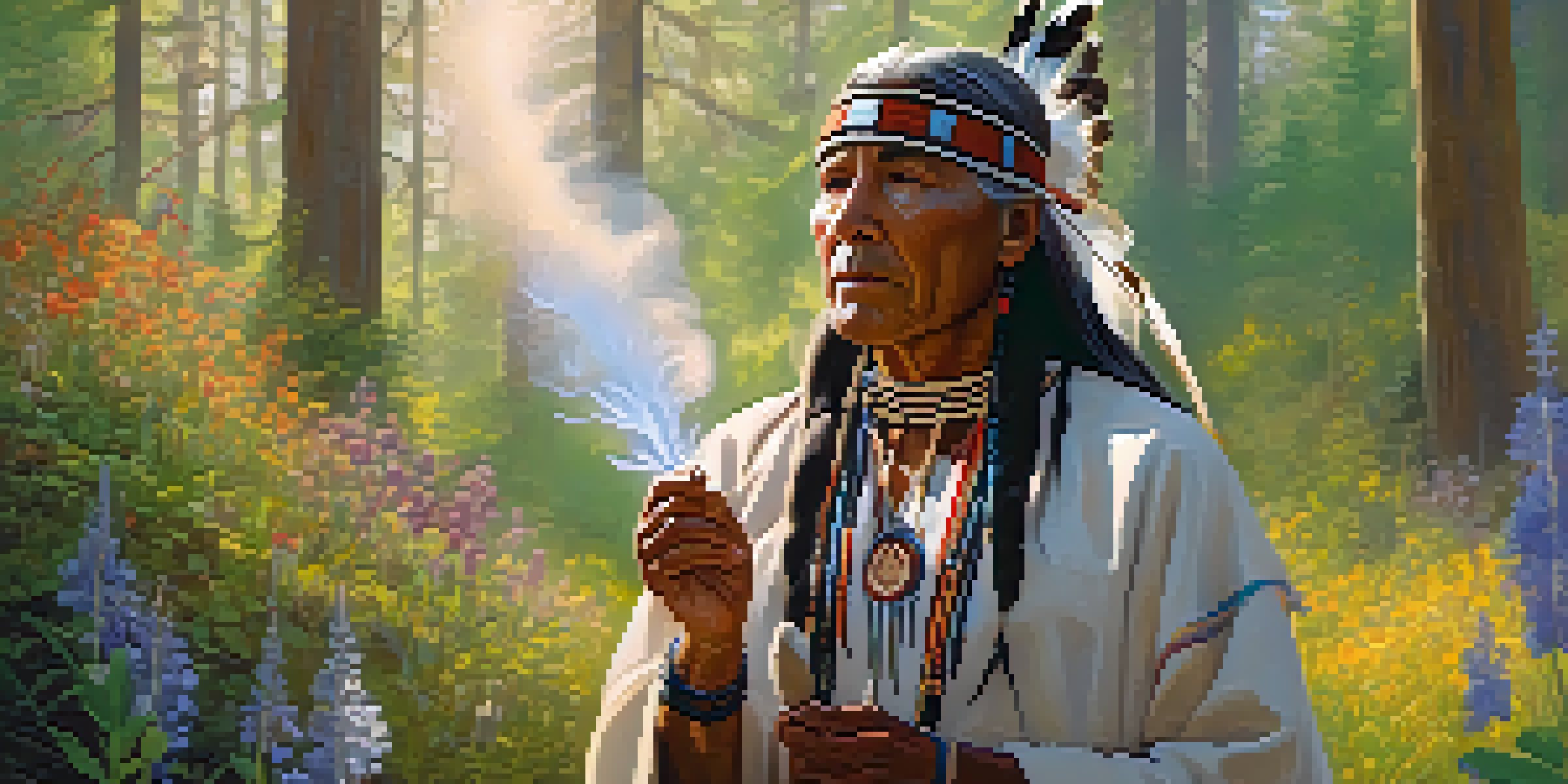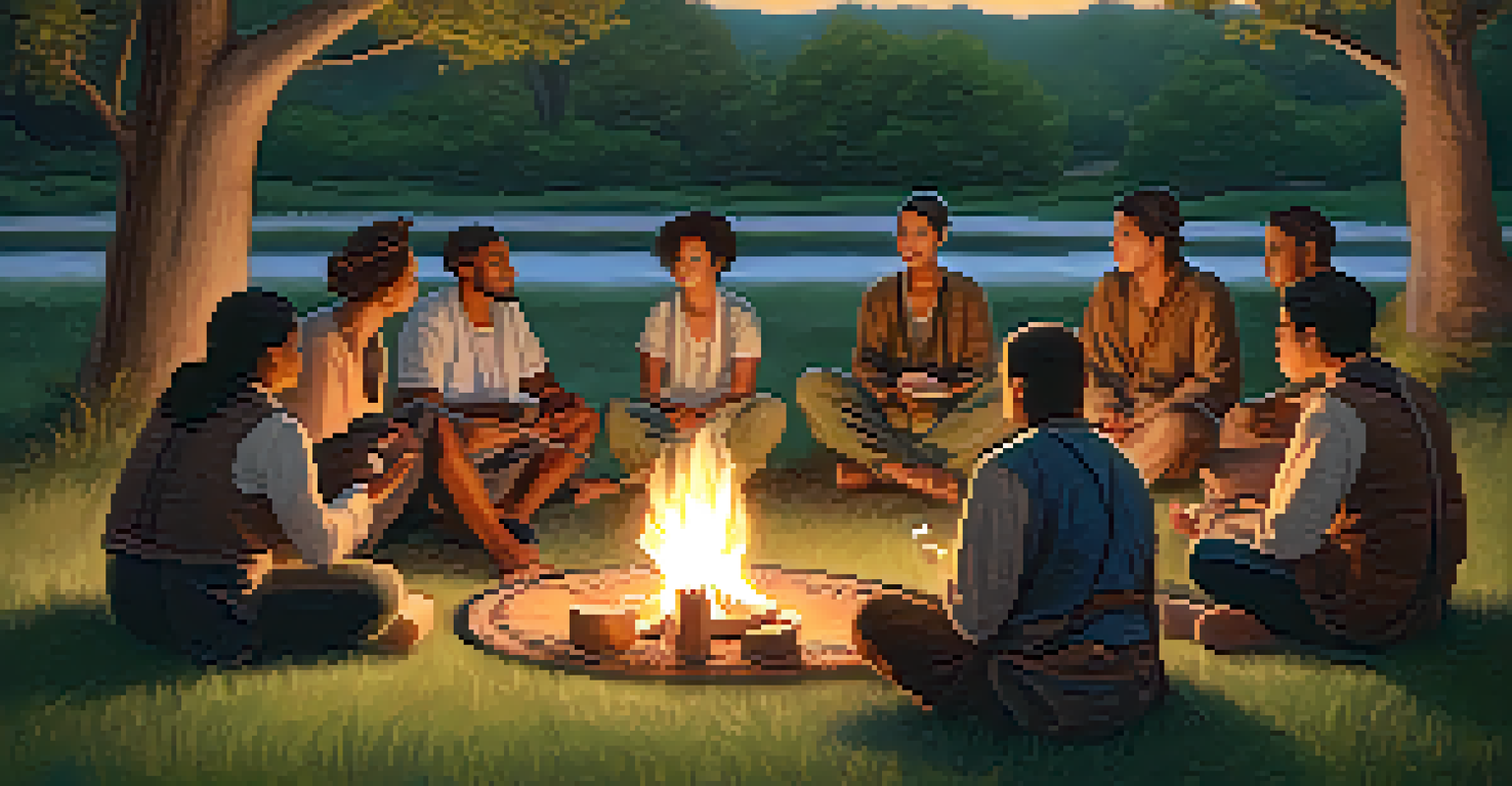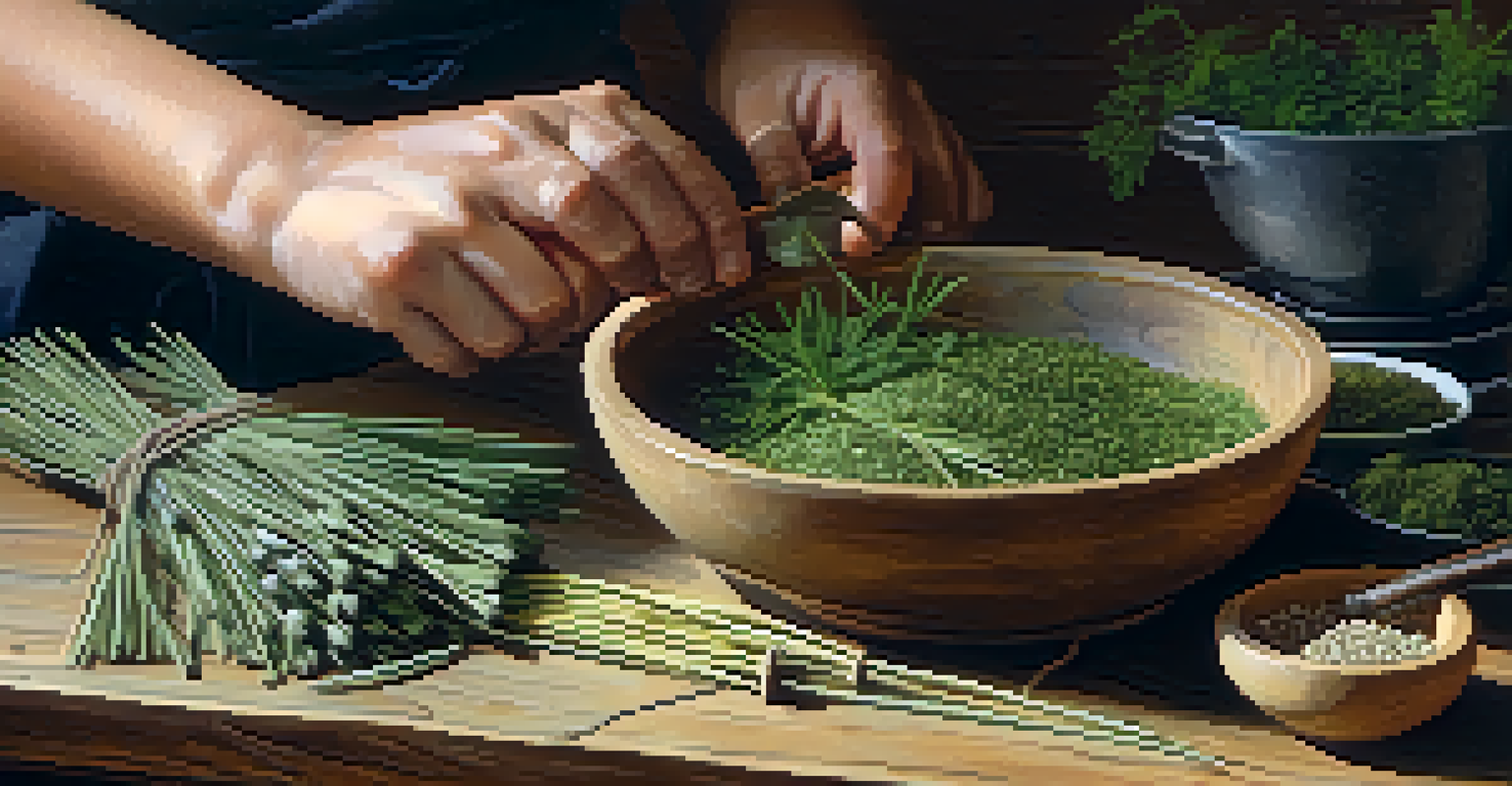Traditional Native American Healing Practices and Beliefs

Understanding the Foundation of Native American Healing
Traditional Native American healing practices are deeply rooted in the belief that health is a balance between the mind, body, and spirit. These practices often reflect a holistic approach, emphasizing the connection between individuals and the natural world. For many tribes, health is not merely the absence of illness, but a state of harmony within oneself and with the environment.
The greatest healing therapy is friendship and love.
Central to these practices is the understanding of energy, often viewed as a life force that flows through all living things. This concept is similar to the idea of 'chi' in Chinese medicine, where maintaining a smooth energy flow is essential for good health. Native American healers work to restore this balance, using various techniques that have been passed down through generations.
Additionally, traditional healing is often community-oriented, involving family and tribal members in the healing process. This collective approach fosters a sense of belonging and support, which is crucial for emotional and spiritual healing. By integrating community ties into healing rituals, Native American practices underscore the importance of social connections in overall wellness.
The Role of Nature in Healing Practices
Nature plays a pivotal role in Native American healing practices, serving both as a source of medicine and a spiritual guide. Many remedies are derived from plants and herbs, which are believed to possess unique healing properties. For instance, sage is often used in cleansing rituals, while sweetgrass is burned to invite positive energy and promote healing.

In addition to herbal medicine, natural elements like water, earth, and fire are also integral to the healing process. They are often incorporated in rituals and ceremonies that aim to restore balance and promote well-being. This deep connection with nature reflects a profound respect for the environment and an understanding of its vital role in health.
Holistic Approach to Healing
Native American healing practices emphasize the balance of mind, body, and spirit, viewing health as harmony with oneself and nature.
Furthermore, many Native American cultures hold that the land itself has spirit and consciousness. This belief imbues natural landscapes with healing powers, making them sacred spaces for prayer and reflection. By spending time in nature, individuals can reconnect with themselves and the world around them, enhancing their healing journey.
Common Traditional Healing Techniques
Traditional healing techniques vary among tribes but often include practices such as sweat lodges, healing circles, and ceremonies. Sweat lodges, for example, are used for purification and spiritual renewal, where participants enter a dome-like structure to sweat out toxins, both physically and emotionally. This communal experience fosters a sense of unity and support among participants.
Nature does not hurry, yet everything is accomplished.
Another popular technique is the use of healing circles, where individuals share their stories and experiences in a safe, supportive environment. This practice emphasizes the importance of listening and empathy, allowing participants to heal through shared vulnerability and understanding. It's a powerful reminder of how communal support can enhance personal healing.
Additionally, many tribes utilize rituals that involve drumming, singing, and dancing as forms of healing. These activities help to raise spiritual energy and often involve invoking the assistance of ancestors or spirit guides. This connection to the spiritual realm not only aids in healing but also reinforces cultural identity and heritage.
The Importance of Spirituality in Healing
Spirituality is a cornerstone of Native American healing practices, interwoven with daily life and health. Many tribes believe that illness can stem from spiritual imbalances or disruptions, making spiritual healing essential for overall well-being. This perspective encourages individuals to seek harmony with themselves, their community, and the universe.
Healers often incorporate spiritual rituals, such as prayers, chants, and offerings, to connect with the spirit world. These practices are believed to invite healing energies and guidance from ancestors and spirit beings. By engaging in these spiritual acts, individuals can find comfort and strength during difficult times, enhancing their healing process.
Nature's Role in Healing
Nature is integral to Native American healing, providing medicinal resources and serving as a spiritual guide that enhances well-being.
Furthermore, many Native American cultures emphasize the importance of dreams and visions in healing. They are viewed as messages from the spirit world, providing insights and guidance. Understanding and interpreting these dreams can lead to profound revelations about one's health and life path, reinforcing the belief that healing is a holistic journey.
The Role of the Healer in Native American Medicine
In traditional Native American healing, the healer plays a crucial role, often viewed as a bridge between the physical and spiritual realms. Healers, or medicine people, are typically chosen by their community for their deep knowledge, intuition, and spiritual insight. Their responsibilities go beyond simply treating ailments; they are also guides and mentors for those seeking healing.
These healers undergo extensive training, often learning through apprenticeships, where they are taught the intricacies of herbal medicine, spiritual practices, and community healing traditions. This knowledge is not only theoretical but deeply experiential, as healers often draw from their own life experiences and connections to the spirit world.
The relationship between the healer and the individual is also vital, based on trust and mutual respect. This bond allows for a tailored approach to healing, where the healer can address not just the symptoms, but the underlying issues affecting a person's well-being. This personalized care is a hallmark of traditional Native American healing.
Modern Adaptations of Traditional Healing
In today's world, many Native American healers are adapting traditional practices to meet contemporary needs while preserving their cultural heritage. This adaptation can be seen in the integration of traditional healing with modern healthcare practices, creating a more holistic approach to health. For example, some Native American clinics offer a blend of Western medicine and traditional therapies.
This fusion allows individuals to benefit from both worlds, addressing physical ailments with medical treatments while also nurturing emotional and spiritual health through traditional practices. It's an empowering choice that respects cultural roots while embracing modern advancements.
Community-Centered Healing
Healing practices involve the community, reinforcing social bonds and emphasizing that individual wellness is connected to the collective health of the tribe.
Moreover, many Native American healers are now sharing their practices with a broader audience, participating in wellness workshops and community events. This outreach not only helps to educate others about the richness of Native American healing traditions but also fosters a greater understanding and respect for these practices in the wider community.
The Significance of Community in Healing Practices
Community is a vital component of traditional Native American healing practices, emphasizing the interconnectedness of individuals within a tribe. Healing is often viewed as a collective responsibility, where the well-being of one person is linked to the well-being of the entire community. This perspective creates a strong support system that enhances individual healing journeys.
Rituals and ceremonies often involve the participation of family and community members, reinforcing social bonds and shared experiences. This sense of belonging nurtures emotional healing, as individuals feel supported and understood by those around them. The communal aspect of healing is a powerful reminder that no one is alone in their struggles.

Furthermore, the act of gathering for healing ceremonies or rituals fosters a sense of identity and cultural continuity. By engaging in traditional practices, communities preserve their heritage and pass down valuable knowledge to future generations. This connection to culture not only aids in healing but also strengthens the fabric of the community.